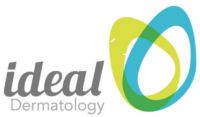Mohs Surgery Postoperative Care
Cures the skin cancer
Mohs micrographic surgery is a very specialized and effective way to treat skin cancer. It provides the highest cure rate of any skin cancer treatment while at the same time removing the least amount of tissue. This method differs drastically from other methods by allowing the surgeon to examine 100% of the margins (edges) of the tissue and map out all of the roots and extensions of the cancer.
During this procedure performed under local anesthesia, Dr. Mott removes the skin cancer in thin layers. The tissue is carefully mapped and then meticulously examined under the microscope. Dr. Mott actually draws on overlays of digital photographs of the surgical site to indicate where the cancer cells remain hidden to the naked eye. This process is repeated until not a single cancer cell or root remain.
Since other surgical methods typically examine less than 1% of the edges of the cancer, this 100% examination method almost eliminates the chance of leaving a cancer cell behind, resulting in the highest cure rate possible. And without having to “guess” where the cancer cells remain, healthy tissue is spared, often resulting in smaller wounds that heal with less scarring.
The Mohs technique is particularly valuable for treating skin cancers on the face, nose, ears, lips, and eyelids since achieving the highest cure rate while sparing the most healthy tissue is absolutely critical in these delicate areas. Mohs surgery is also very useful for recurrent skin cancers, large skin cancers, skin cancers with poorly visible boundaries, and skin cancers with irregular growth patterns such as infiltrating or morpheaform basal cell carcinomas.
For first time treated (primary) skin cancers, the cure rate often exceeds 99%! And even for difficult recurrent skin cancers, Mohs surgery is successful at least 95% of the time.
Dr. Mott is a fellowship-trained Mohs micrographic and reconstructive surgeon, and a member of the American College of Mohs Surgery (ACMS). This means that Dr. Mott completed a vigorous additional year of in depth training in skin cancer surgery and reconstruction after completing his residency in dermatology. He has over 15 years of experience performing Mohs surgery and has treated over 8,000 skin cancers with the Mohs technique.






